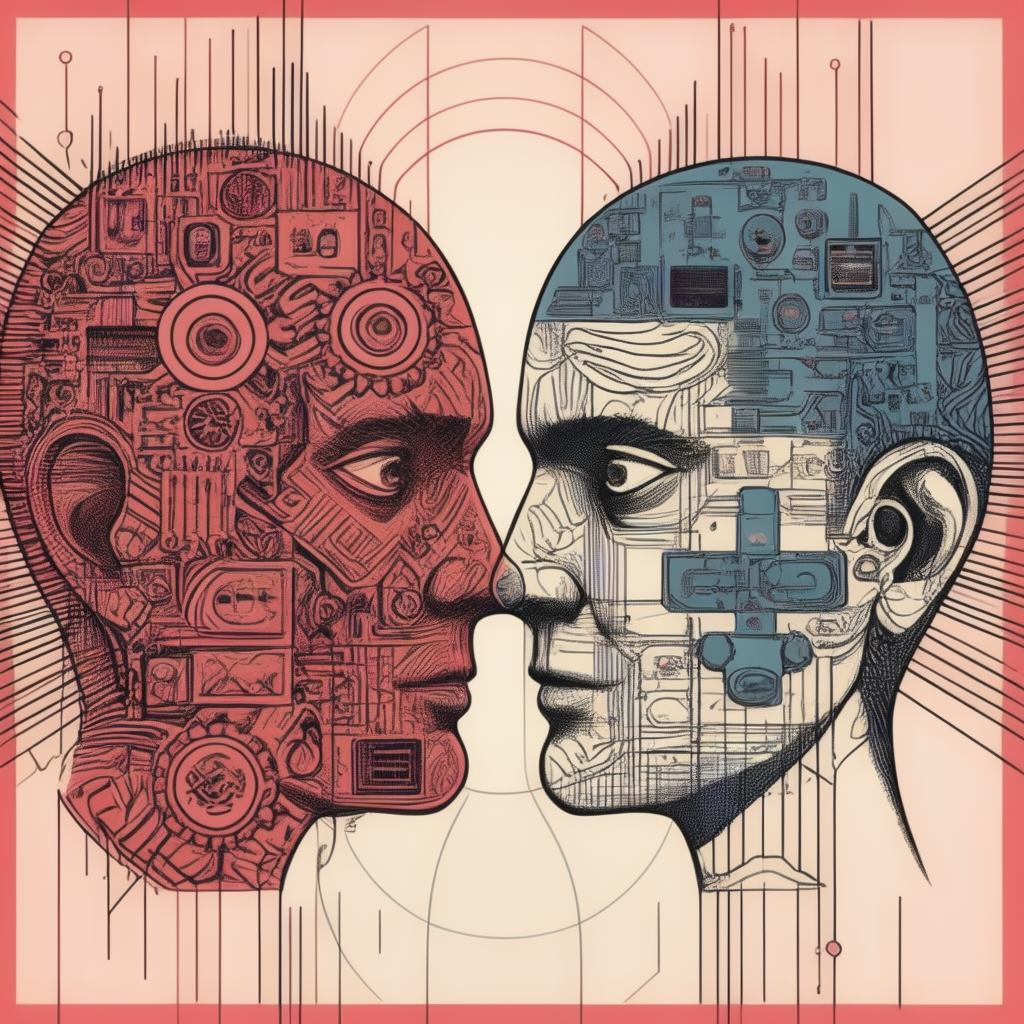The Application of Knowledge, Data, and Insights: Turning Information into Actionable Power
In today’s information-rich world, organizations and individuals are inundated with vast amounts of data, information, and knowledge. While the availability of data has never been greater, the key challenge lies in transforming this data into meaningful insights and actionable decisions. Understanding how to effectively apply knowledge, data, and insights is crucial for achieving success across industries, from business and technology to science and everyday problem-solving. In this blog post, we will explore the different stages of the data-to-insights journey, discuss the applications of gathered knowledge, and highlight the benefits of informed decision-making.
1. From Data to Knowledge: Understanding the Information Hierarchy
Before delving into the application of insights, it’s essential to distinguish between data, information, and knowledge. These terms are often used interchangeably, but they represent different stages in the processing and understanding of raw facts.
- Data: Raw facts and figures that have yet to be processed or analyzed. Data in its unprocessed form is typically not meaningful on its own. For instance, sales numbers, customer clicks, or environmental sensor readings are data points.
- Information: When data is organized, structured, and contextualized, it becomes information. Information adds meaning to data by highlighting trends, patterns, or correlations. For example, knowing that sales numbers spiked during a specific promotion or time frame provides context.
- Knowledge: Knowledge is derived from synthesizing and interpreting information. It involves understanding the underlying causes, relationships, and implications of the information. When organizations understand why sales spiked, such as specific customer behaviors or external market conditions, they’ve converted information into knowledge.
The goal is to use these stages progressively, turning data into actionable insights that can lead to informed decisions.
2. Gathering Insights: The Critical Role of Analysis
The process of gathering insights involves analyzing data and information to uncover trends, predict outcomes, and identify opportunities for improvement. With advanced tools like machine learning, data analytics platforms, and artificial intelligence (AI), organizations can now automate the discovery of valuable insights from enormous datasets.
However, gathering insights requires more than just technology. It demands critical thinking and a deep understanding of the context in which data is being analyzed. Key techniques for generating insights include:
- Data Mining: Extracting useful information from large datasets using algorithms and statistical methods to uncover hidden patterns.
- Predictive Analytics: Using historical data to forecast future outcomes, which can help businesses anticipate trends or potential challenges.
- Visualization: Transforming raw data into graphs, charts, and other visual formats to make trends more apparent and accessible to decision-makers.
3. Applying Knowledge and Insights: Making Data-Driven Decisions
The value of knowledge and insights lies in their application. Once an organization or individual has gathered insights, the next step is to implement strategies, actions, or solutions based on those findings. Here’s how knowledge and insights can be applied across different domains:
- Business Decision-Making: In the corporate world, data-driven decision-making is the gold standard for optimizing operations, marketing strategies, and customer relations. For instance, companies use customer data to personalize marketing campaigns, improve product offerings, and reduce churn rates. Predictive analytics helps businesses anticipate demand and make adjustments to inventory or pricing strategies.
- Product Development: Product teams rely on customer feedback and market research data to inform the design and functionality of new products. By identifying pain points, preferences, and trends, companies can create products that better meet consumer needs. Insights gathered through user testing and data analytics allow for iterative improvements that enhance product-market fit.
- Healthcare: Medical professionals and researchers apply data insights to improve patient care and outcomes. By analyzing large datasets from clinical trials, hospitals, and wearable devices, healthcare providers can identify the most effective treatments for specific conditions, predict disease outbreaks, and personalize care for individuals.
- Scientific Research: Insights gained from experimentation and analysis lead to breakthroughs in various scientific fields. For example, climate scientists use data models to predict future environmental changes and inform policies that can mitigate the effects of global warming.
- Personal Growth and Learning: On an individual level, insights gathered from personal experiences, education, and even self-tracking devices (such as fitness trackers) help people make better decisions about their health, productivity, and well-being.
4. The Feedback Loop: Continuous Learning and Adaptation
One of the most important aspects of applying knowledge and insights is the establishment of a feedback loop. Insights must be continuously evaluated to assess their effectiveness. Did the actions taken lead to the desired outcome? If not, why?
This iterative process of applying insights, measuring results, and refining actions is key to long-term success. By regularly updating data and analyzing new information, organizations and individuals can adapt to changing environments and improve decision-making over time.
For example, in digital marketing, A/B testing is often used to determine which version of a campaign performs better. Marketers apply insights from the test to optimize future campaigns, creating a cycle of continuous improvement.
5. Overcoming Challenges in Applying Insights
While the potential benefits of data-driven decision-making are clear, applying knowledge and insights is not without its challenges. Some of the common obstacles include:
- Data Quality: Poor-quality data can lead to inaccurate insights, which can negatively impact decisions. Ensuring data accuracy, completeness, and relevance is essential.
- Data Overload: With so much data available, it can be difficult to determine which information is most relevant. Organizations need to prioritize meaningful insights and avoid getting lost in unnecessary details.
- Bias in Analysis: Human bias or flawed algorithms can lead to skewed interpretations of data. Ensuring diverse perspectives and robust testing can mitigate this risk.
- Implementation Barriers: Even with strong insights, applying them can be challenging due to organizational resistance, lack of resources, or misalignment between teams. Effective communication and leadership are required to ensure that insights are put into practice.
The process of applying knowledge, data, and insights is not just a fundamental part of decision-making but also a deep-rooted practice that transcends multiple disciplines, including science, medicine, evolution, neuroscience, genetics, and biology. From understanding raw facts to applying complex insights for future actions, this process involves a series of cognitive, biological, and psychological factors. However, one puzzling question remains: Why do we forget these insights, those universal truths, when situations arise? Why do we sometimes fail to apply what we know, even when it’s crucial? In this expanded version, we’ll explore the reasons why this happens, the root causes, and how we can overcome these barriers.
1. From Data to Insight: Basics to Advanced Perspectives
Basics: How Knowledge and Data Turn into Insights
- Scientific Perspective: At the most basic level, data collection begins with observations or measurements, which are often captured through scientific experiments. These raw data points have little meaning on their own but can be structured to reveal patterns. From the scientific method, hypotheses are generated based on initial data, tested, and refined to produce new knowledge and insights.
- Medical Research: In medicine, data from clinical trials and patient care are constantly transformed into actionable insights. Medical advancements, such as the discovery of new drugs or treatment methods, rely heavily on interpreting large sets of patient data.
- Evolutionary Perspective: Over millions of years, organisms have evolved to respond to environmental data—information about predators, food sources, or climate changes. The human brain itself is a product of evolutionary refinement, designed to process vast amounts of information and generate knowledge needed for survival.
Intermediate: Application of Insights Across Domains
- Neuroscience and Biology: In neuroscience, brain scans and neuroimaging data help researchers understand how neurons communicate, how the brain processes information, and how knowledge is stored and recalled. Insights into brain plasticity, for example, help inform educational practices that allow individuals to learn faster and retain information longer.
- Genetics: In genetics, insights gathered from the study of DNA help scientists identify genes responsible for diseases and traits. This knowledge is applied in personalized medicine, where treatments are tailored to the genetic profile of individual patients. CRISPR technology, a breakthrough in genetic research, allows for editing genes based on insights gathered from DNA sequencing.
- Biology: In biology, data from ecosystems, species behavior, and evolutionary adaptations provide insights into the delicate balance between organisms and their environments. Biologists apply this knowledge to preserve biodiversity, protect endangered species, and combat climate change.
Advanced: Insights in Complex Systems
- Artificial Intelligence and Machine Learning: AI systems mimic the human brain’s ability to learn from data. These systems use vast amounts of data to predict outcomes, improve efficiency, and generate insights that can be applied to everything from autonomous vehicles to financial markets. As AI advances, its ability to generate actionable insights from data continues to grow.
- Cognitive Science: Insights from cognitive science reveal how human beings process, categorize, and store information. Cognitive load theory, for instance, explains why we can handle only a limited amount of information at a time, impacting our decision-making abilities. This knowledge is applied in user interface design, learning environments, and even mental health treatment.
2. Why Do We Forget Insights? The Neuroscience and Psychology of Memory Lapses
Despite having access to a vast storehouse of knowledge, insights, and wisdom, humans often forget or fail to apply them during crucial moments. There are several root causes for this:
The Role of Memory and Forgetting
- Cognitive Overload: When too much information is processed at once, the brain struggles to store and retrieve key insights. This leads to cognitive overload, where important pieces of wisdom are lost amid competing data.
- Stress and Anxiety: Stress triggers the brain’s “fight or flight” response, making it harder to access deeper cognitive processes, including recalling insights and knowledge. Anxiety can cloud judgment and make it difficult to apply wisdom, even when it’s known.
- Emotional Interference: Emotions can overshadow rational thought. Strong emotions, especially negative ones like fear or anger, can override the ability to think clearly and access previously gained insights.
- Habits and Conditioning: Neuroscience has shown that much of our behavior is governed by habits that reside in the subconscious mind. Even when we “know better,” ingrained habits can override our rational decision-making processes, causing us to act based on past conditioning rather than current insights.
The Biological Basis of Forgetting
- Neural Pathways and Synaptic Pruning: The brain is designed to forget. As we age, the brain undergoes a process called synaptic pruning, where it eliminates unused connections between neurons. If certain insights or pieces of knowledge aren’t regularly used or revisited, they are “pruned” away, making them harder to access in critical situations.
- Sleep and Memory Consolidation: Sleep plays a crucial role in memory consolidation, where the brain processes the day’s information and stores it in long-term memory. Poor sleep or lack of sleep can impair this process, leading to memory lapses and forgetting key insights.
Evolutionary Reasons for Forgetting
- Adaptive Forgetting: From an evolutionary perspective, forgetting is adaptive. Not all information is useful, and holding onto every piece of data would overwhelm the brain. Evolution has prioritized the retention of information critical to survival, while less relevant data is forgotten.
- Bias Toward Immediate Threats: The human brain has evolved to respond to immediate threats and challenges, often prioritizing short-term survival over long-term wisdom. This means that in stressful situations, we may forget valuable insights because our brain is focused on immediate dangers or rewards.
3. Overcoming the Tendency to Forget: How to Retain and Apply Insights
Despite the natural tendencies to forget or overlook insights, there are ways to strengthen our ability to retain and apply knowledge when needed. Here are some strategies to enhance memory and application:
1. Regular Reinforcement and Practice
Insights must be continuously reinforced to become ingrained in our memory. Just as muscle memory develops through practice, knowledge and wisdom must be actively applied. This can be achieved by:
- Reflection and Journaling: Regularly reflecting on key lessons and writing them down helps cement insights in the brain.
- Active Learning: Engage with knowledge actively rather than passively. For example, discussing insights with peers, teaching others, or applying insights in real-world situations strengthens memory.
2. Emotional Regulation
Since emotions play a critical role in memory and decision-making, learning to regulate emotions can help individuals access wisdom in stressful situations. Practices like mindfulness, meditation, and cognitive-behavioral therapy (CBT) can help people manage stress and anxiety, making it easier to apply insights during challenging situations.
3. Building Resilient Neural Pathways
The more frequently a neural pathway is used, the stronger it becomes. This principle applies to retaining insights:
- Retrieval Practice: Regularly testing oneself or recalling insights strengthens neural pathways, making it easier to remember important information when needed.
- Spaced Repetition: Instead of cramming information, spacing out learning over time leads to better retention of knowledge. Spaced repetition is a powerful technique used in education to help learners remember key insights over the long term.
4. Aligning Habits with Insights
To overcome ingrained habits that conflict with new knowledge, individuals must work to align their habits with the insights they’ve gained. This requires:
- Behavioral Conditioning: Using positive reinforcement to condition new habits that align with valuable insights.
- Habit Stacking: Pairing new habits with existing ones helps build routines around applying wisdom. For instance, someone might decide to reflect on their insights daily while having their morning coffee, reinforcing both actions.
5. Cognitive Tools
Certain cognitive tools can help overcome biases and cognitive distortions that cause us to forget insights:
- Decision Frameworks: Applying structured decision-making frameworks, like cost-benefit analysis or the Pareto Principle, helps individuals avoid emotionally driven decisions and prioritize knowledge-driven choices.
- Visualization: Visualizing future scenarios where insights might be needed helps create mental models that can be recalled when faced with similar situations in reality.
Conclusion: A Continuous Process of Learning, Application, and Growth
The application of knowledge, data, and insights is a multifaceted process influenced by cognitive, emotional, biological, and environmental factors. While the journey from gathering data to applying insights can be challenging, understanding the underlying mechanisms of memory, stress, and decision-making provides pathways to success.
Forgetting insights is a natural part of the human experience, but with regular practice, emotional control, and cognitive tools, we can retain and apply knowledge when it matters most. The key is recognizing that the process is dynamic—a continuous loop of learning, applying, reflecting, and improving.
By mastering this process, we can bridge the gap between what we know and what we do, making informed decisions that lead to better outcomes in every aspect of life.
Conclusion
The true value of data, information, and knowledge lies in their application. Turning insights into action enables businesses, researchers, healthcare providers, and individuals to make informed decisions, solve complex problems, and achieve their goals. By understanding the process of transforming raw data into actionable knowledge and continuously refining strategies based on feedback, organizations and individuals can thrive in an increasingly data-driven world.
The power of knowledge isn’t just in gathering it but in using it to make smarter, more impactful decisions. Those who master the application of insights will find themselves ahead in innovation, competitiveness, and success.




